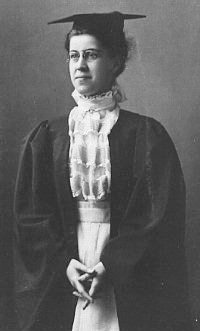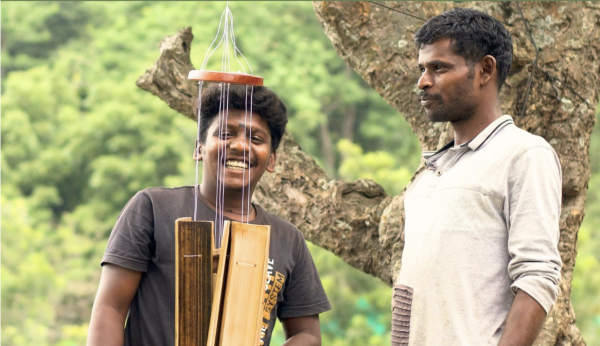New Podcast on Pioneer of Aviation, Katharine Wright

Courtesy of Wright Brothers Aeroplane Company
Katharine Wright
In Her Own Wright, the new podcast hosted by award-winning author Harry Haskell, explores the extraordinary life of Katharine Wright, Oberlin Class of 1898. Broadcast on 91.3 WYSO, the public radio station in Yellow Springs, Ohio, the show uncovers Wright’s invaluable contributions to society as a New Woman of the early 20th century. Her legacy has long been overshadowed by the triumphs of her older brothers Wilbur and Orville Wright, the fathers of powered flight.
In each of the podcast’s three episodes, various scholars, historians, and family members offer illuminating insights into the life and times of the “Wright Sister,” casting her as an indispensable member of the Wright family and an invaluable force in the history of aviation. Though her story is often left unsung, her dauntless dedication to her brothers served as an essential factor in their heroic first flight. Dramatic readings of her letters are interspersed amidst captivating tales of her childhood, time at Oberlin, and her late-life romance with Kansas City journalist Henry J. Haskell, Class of 1896, whom she met at the College in the mid-1890s.
For the podcast’s host, who is Katharine Wright’s step-grandson, the story is especially personal. While most people are familiar with the Wright brothers and the Wrights’ impact on Ohio, very few know of Katharine’s.
“Katharine has always been part of that story, but usually very much in the background,” Haskell said. “I think that began to change around the time my mother made available for public inspection the letters that Katharine wrote to my grandfather when they were effectively courting before their marriage in 1926. They revealed a side of Katharine that hadn’t been fully appreciated before, particularly with the new interest in women’s history and the new appreciation of women’s contributions to what had formerly been considered male domains. And, of course, aviation is a very prime example of that.”
When Katharine arrived at Oberlin in 1893, the College was one of very few co-educational institutions in the United States. Following the death of her mother in 1889, 15-year-old Katharine took control of the household and learned to move freely in a male-dominated landscape. At Oberlin, she again found herself surrounded by men; She studied Classics and gained confidence in her leadership capabilities, intellect, and worth. According to Judith Hallet, professor emerita of Classics at the University of Maryland, Katharine’s experience as a female classicist in Oberlin’s co-educational environment was rare and an essential asset to her future endeavors and travels.
“This co-education, male- and female-integrated world in which she moved was very different from what one would have found with most educated women,” Hallet said. “At that time, in the field of classics, women went to all-fe-male secondary schools and then went on to all-female colleges. Some went to all-female graduate school, but it was very rare for women to get their PhDs at all. I would underscore that because she thrived in this co-educational environment, she was much better equipped to deal with the world of aviation and the world of her brothers. She never felt monopolized or controlled by men.” Through his research, Haskell found that Oberlin became Katharine’s safe haven. In the 1920s, decades after her graduation, she became the second woman to serve as a trustee of the College.
“Oberlin was, for Katharine, the foundation of her life,” Haskell said. “It rein- forced an existing faith in progressiveness. She referred to Oberlin constantly for the rest of her life as a bedrock of values. By the time she returned to the College as trustee in the 1920s, she was a world celebrity. Wilbur and Orville had invented the airplane and they had conquered Europe with her help as their ambassador to the world. She had made a real name and a profile for herself.”
When Katharine began teaching Lat- in and history at Steele High School in Dayton, Ohio, her brothers ventured to Kitty Hawk, North Carolina. In 1903, after four years of experimentation, they became the first people to successfully man an airplane flight. Katharine taught until 1908, when a broken propeller sent one of her brother’s airplanes flying out of control. The crash killed the passenger and seriously injured Orville, who suffered broken ribs and a broken leg. Katharine immediately went to his bed- side at an army hospital in Virginia and never returned to teaching.
In 1909, after Orville recovered, Katharine traveled to Europe with him and Wilbur, quickly becoming a social mar- vel in comparison to her notoriously shy brothers. According to Richard Maurer, author of The Wright Sister: Katharine Wright and Her Famous Brothers, Katharine’s outgoing, spirited personality tremendously benefitted the Wright brother’s flight pursuits.
“After they became famous, particularly after they’ve gone to Europe to introduce their flying machine, they get much more attention than they had in the United States,” Maurer said in the second installment of In Her Own Wright. “They become known not just as the ‘Wright brothers’ but as the ‘Wright brothers and the Wright sister.’ The three of them were thought of as a team. In France, there was speculation in the press that Katharine may have done the calculations for the ma- chine or done some of the technical work.”
While they were overseas, Katharine often represented her brothers in public, speaking to foreign dignitaries like Alfonso XIII, the King of Spain, and Prince Friedrich Wilhelm of Prussia. French newspapers became fascinated by her charm and wit; in many ways she came to signify a more human side of the Wright brothers. When the siblings returned to the United States, they were international celebrities. They became lionized as the pioneers of aviation, and although there was still an impression that Katharine played a significant role in the construction of the airplane, she denied these rumors.
In the years following Wilbur’s death in 1912 and the selling of the Wright Company in 1915, Orville became increasingly possessive of Katharine. In 1926, when Katharine wed Haskell on Oberlin College grounds, Orville refused to attend the wedding. The last episode of In Her Own Wright, titled “The Hazards of Love,” explores the dissolution of their relationship. Although he stalwartly refused to contact her when he discovered she had contracted pneumonia, he was at her bedside when she died in 1929.
In 1931, Henry J. Haskell gifted the Katharine Wright Haskell fountain to the Allen Memorial Art Museum, which still stands outside the museum today. The younger Haskell, who has spent the past ten years poring over his grandparents’ letters, visits the monument often. Still, he feels the Haskell-Wright legacy is lost on some of the College’s newer students.
“All these people walk by every day, and they say ‘Katharine Wright Haskell? Is she a Wright? Is she a Haskell? What’s her story?” Haskell said. “I don’t know if anybody ever looks at that anymore. But it struck me that if you look out from the Allen across Tappan Square you’ll see the Wright Physics Laboratory that Orville donated to the school. … Our family was able to fund the installation of a plaque. The podcast and the plaque, those were some first steps [toward reconnect- ing the Wright family and Oberlin].”










